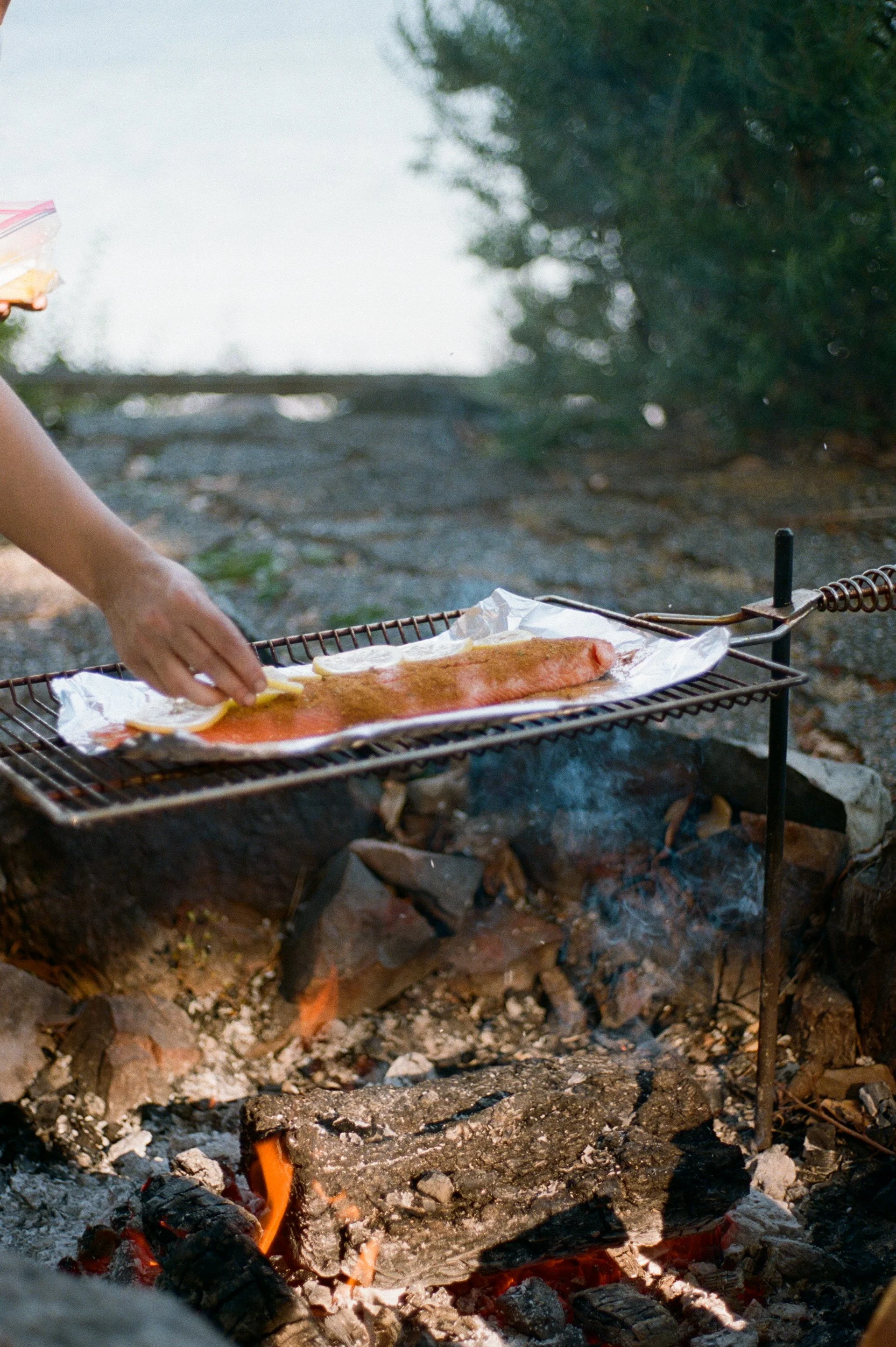The Art of Cooking Over Fire
A GUIDE TO WOOD, FIRE, AND FLAVOR
Firewood 101: Picking Your Flavor
Your wood is your flavor. Apple brings fruity sweetness, mesquite hits bold and smoky, oak gives steady balance, hickory tastes like bacon smoke, and cherry adds color with subtle sweetness.
Skip the softwoods like pine – they'll make everything taste like turpentine. Never burn treated lumber or painted wood. Use seasoned wood that's been dried for at least six months. Split into chunks: pencil-thick for quick flavor, thumb-thick for steady smoking, wrist-thick for maintaining coals.
The Art of Lump Charcoal and Coal Arranging
Real lump charcoal burns hotter and cleaner than briquettes. No fillers, no chemicals, just pure wood charcoal that lights fast and leaves minimal ash. Build heat zones: pack coals tight on one side for searing, spread thinner in the middle for medium heat, leave one section with scattered coals for gentle cooking. Create gradual transitions between zones so you can slide food around for perfect temperature control.
Taming the Fire: Keeping It Hot and Just Right
Read your coals: orange-red glow with light ash means ready to cook. Blue flames are too hot, no glow means add fuel. Control temperature with airflow – more air feeds the fire, less air tames it down.
Run a three-zone system: active flames for heat and smoke, glowing coals for searing, mellowed coals for gentle cooking. This handles everything from quick scallops to slow pork shoulders.
Watch your food, not the clock. Listen to the sizzle, watch the color, smell the development.
Essential Techniques
Banking: Move coals like you're painting – bank high for intense heat, rake thin for gentle warming.
Two-Stage Sear: Start over blazing coals for crust, move to moderate heat to finish.
Smoke Control: Want thin blue smoke, not thick white billows. Heavy smoke means you need more air or drier wood.
Fire cooking demands presence. You can't set it and forget it. But food cooked over real fire tastes like nothing else – the smoke penetrates deep, high heat creates impossible textures, and char adds complexity that transforms simple ingredients.
Shop Dovetail Over-Fire Favorites
PLUS DOVETAIL'S OVER FIRE MENUS
OCEANSIDE FEAST
Chargrilled Cheeses, Figs and Fire-Cooked Flatbread
Local Lettuces, Charred Scallion Dressing, and Apples
Slow-Roasted Rosemary Citrus Salmon
Grilled Oysters Topped with Chile Garlic Herb Butter
Penn Cove Mussels in a White Wine Sauce
FALL OVER-FIRE MENU
Smoky Butternut Squash Soup With Charred Sage and Spiced Pumpkin Seeds
Charred Pear Salad With Smoked Blue Cheese and Roasted Walnut Vinaigrette
Wood-Fired Roasted Lamb Chops with Smoked Paprika Rub and Ember-Baked Sweet Potatoes
Charred Fig Tart With Smoked Honey and Mascarpone Cream
Smoked Old Fashioned








